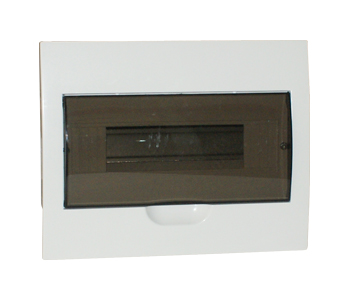Choosing the right safety Electrical Wiring Accessories

Besides sockets and plugs, electrical wiring accessories include many other things, including cable clips, cut-outs, and insulation tape. These items may seem like a small thing, but they are crucial for ensuring safety and reliability when rewiring your home.
Sockets
Whether it's an electrical appliance or a switch, sockets are used to connect electrical equipment to a power grid. There are many different types and variations of sockets used in homes all over the world. You'll need to determine which type will work best for your needs.
Choosing the right socket is very important for safety. Safety features may be integral to the socket or built into the plug. In addition, some sockets have built-in fuses to protect against overload or short-circuiting.
Safety features include recessed contacts and an insulation coating. These features help protect the energized metal from being exposed. Some sockets also have a physical lockout mechanism to prevent insertion of objects into the active terminal.
A standard Australian plug and socket have two round pins with centers spaced at 19 mm. The pins are matched to the female contacts in the socket.
Plugs
Various types of electrical plugs have been developed to suit the needs of various wiring systems. The plug is usually comprised of a plastic support, male metal prongs, and a metallic female outlet. The plug also contains a grounding pin. This is a stipulation in order to divert stray current and prevent electrocution.
The best way to determine which type of plug you need is to consider the voltage rating, current rating, and other electrical specifications. The best plugs are designed to be safe, easy to use, and reliable. Typically, these devices have a locking mechanism that prevents accidental removal. This is a clever way to make sure the plug is not accidentally disconnected from the electrical outlet.
Insulation tape
Using insulation tape for electrical wiring accessories is a great way to protect the wires from damage or moisture. It is also a good way to repair damaged cables. In addition, electrical tape can also be used to identify different electrical phases and earthing circuits.
In addition, electrical tape is very easy to use. It is also resistant to moisture and sunlight. It can also be coated with rubber to improve its durability. In addition, it can be cut to fit the needs of its user. It can be used for bundling wires and it can be color-coded.
There are many different types of insulation tape for electrical wiring accessories. Some of them include vinyl tape, PVC tape, and mastic tape. These are all available at hardware stores.
Cable clips
Choosing the right cable clips is essential in order to secure your cables and wires. This will ensure that your electrical wiring is safe and well-organized. It will also ensure that your wires are not exposed to any risk of damage or short circuit.
Cable clips are commonly made of plastic or metal. Plastic clips are a safe choice for most applications. But if you live in a fire-prone area, you should consider using metal clips. Stainless steel and copper clips are also available.
Cable clips are available in all shapes and sizes. They come in adhesive and magnetic attachment styles. They can secure your cables to a wall or other surface.
Cable clips are also used to fix wires to an enclosure. They can be used for both home and industrial applications.
Cut-outs
Whether you're a contractor or an electrician, it's not uncommon to come across a number of electrical wiring accessories that you're not sure what they do. A cut out is one such product. It is an important part of an electrical system, as it connects the mains or service electricity cable to the internal wires of a property.
There are many types of cutouts, ranging from the oh-so-classic to the snazzy. They are generally mounted 20 degrees off the vertical. The best ones are made from durable polymers. They are also a good match for the harshest environments. They are typically manufactured in accordance with the ISO 9001 quality system. Until the 1990s, manufacturers used their own dimensional standards. The good news is, they have since moved on to more modern approaches.











